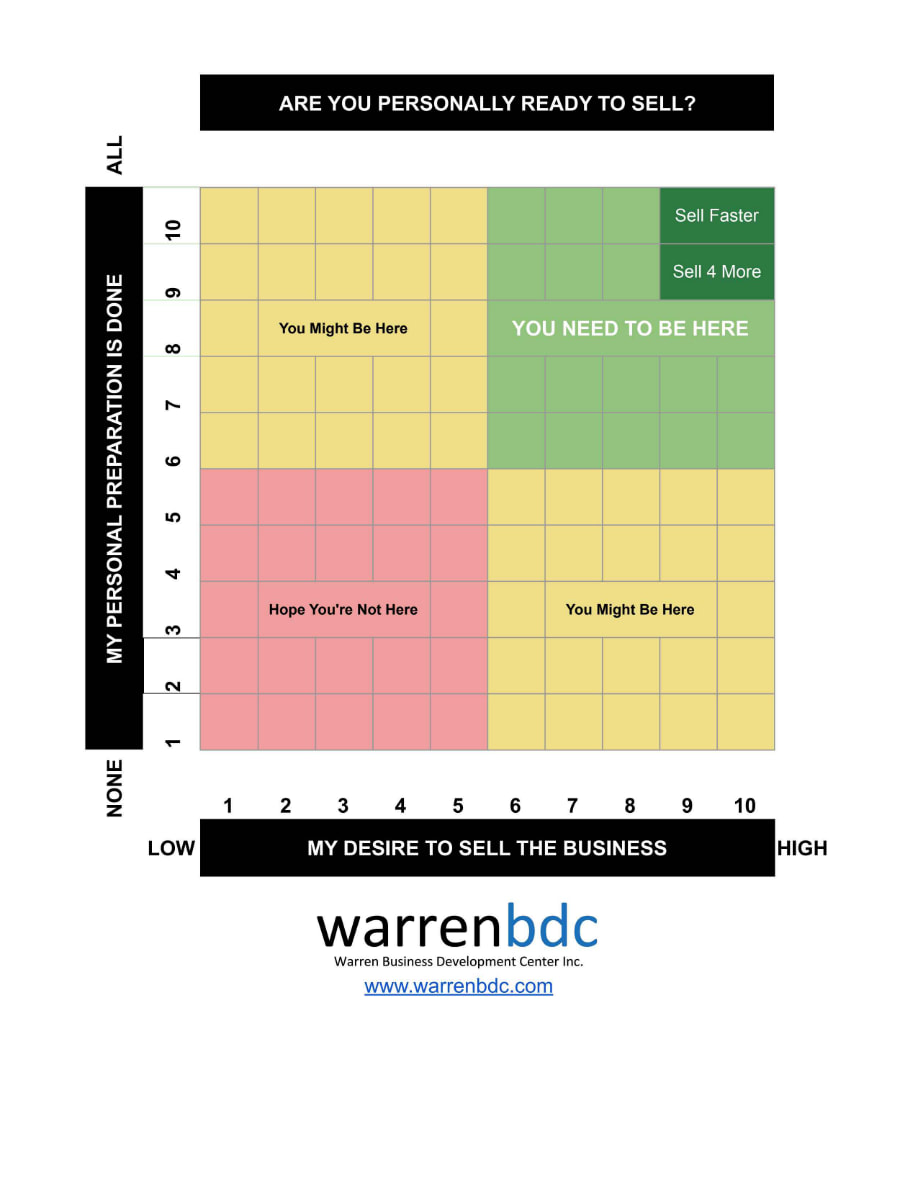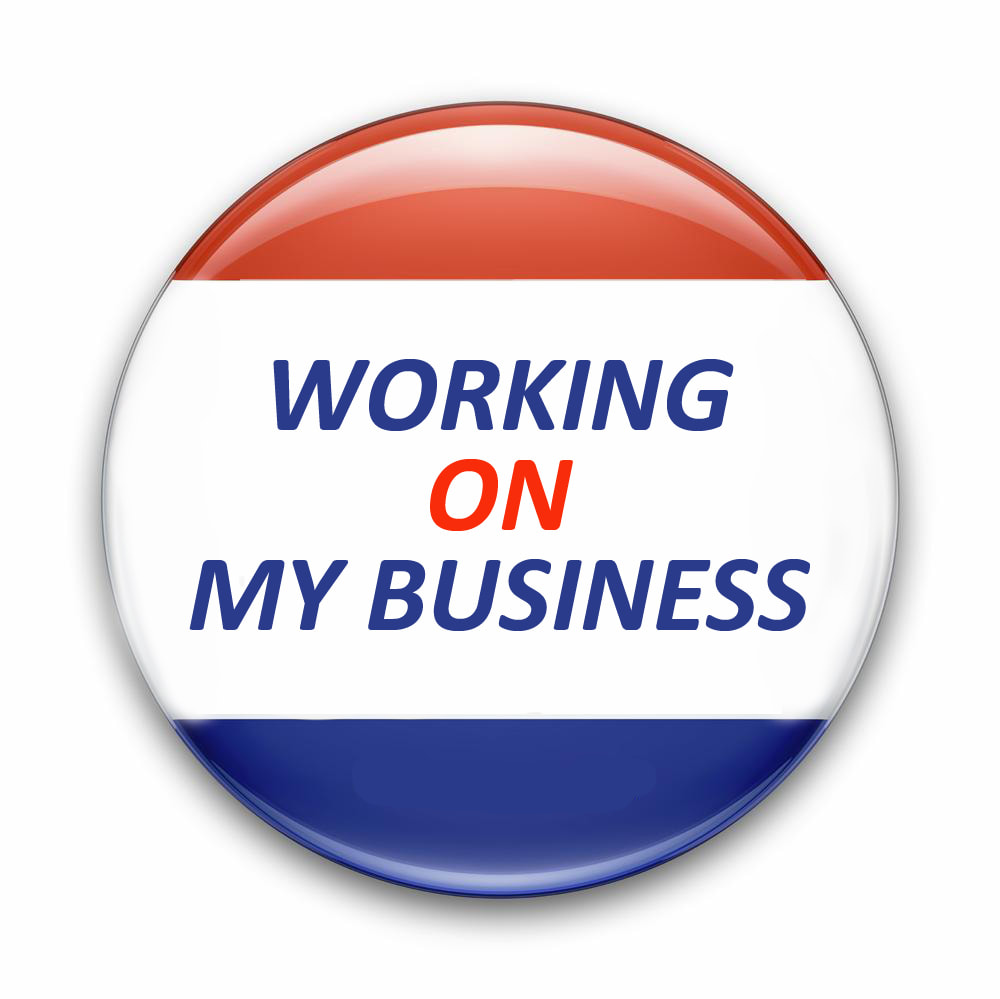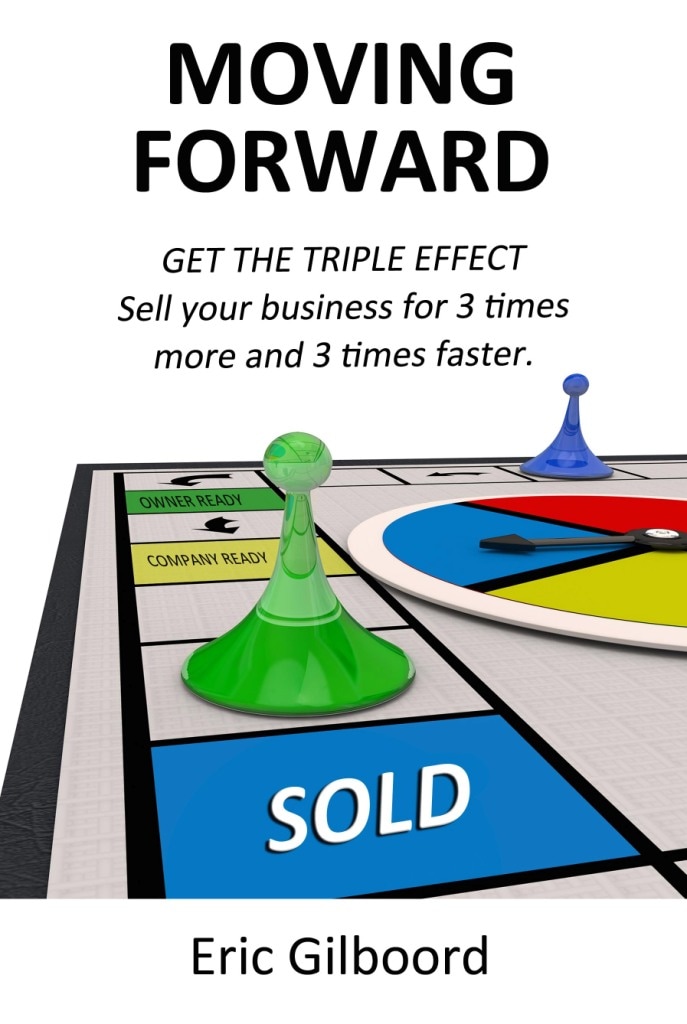(From our online program Sell Your Business 4 More.
Free when you engage with WarrenBDC)
As part of the listing process and in order for your Intermediary to be able to provide good and accurate information to a prospective Buyer, they will need to assemble the following information. Starting your work now and being ready for the Intermediary is key to selling faster and for more.
As soon as you select the Intermediary and or as part of the selection process you can review it together. Do not hesitate to ask questions for further clarity, and make sure that you are both on the same page. In fact the entire transition team needs to be on the same page. Together you will have captured the greatest value of the business to be presented to a prospective Buyer in the best light.
It is not unusual for prospects to ask for further specific information as part of their review. When this happens we urge you to treat these requests with urgency as it is imperative to keep the process moving, you don't want the prospective Buyer to go looking at some other business over yours! They are always looking.
Buyers will need to first see a Teaser followed by a Confidential Information Memorandum The Teaser is a generically worded high level overview. Since this document will be going to the public and not subject to an NDA, it should be very generic, not identify the Seller but contain sufficient details to interest a Buyer to look into your business a bit further. This document will be created together with your Intermediary at the time of listing.
Once the Intermediary has gathered some interest from a prospect and determined suitability they would then release the secondary document the CIM or Confidential Information Memorandum always under a signed NDA.
The secondary set of documents, CIM, typically includes:
• 3 years Income statements.
• Balance sheets.
• Cash Flow statements.
• A 'business deck' to tell the story and better explain the business. Staff, industry, positioning, customers, locations etc.
These documents need to be accurate and correctly reflect the reality as they will become the basis under which a Buyer will issue a LOI or Letter of Intent and begin the Due Diligence process. Any variance here between what you present and what is found out to be the truth by the Buyer will result in a discount, failure to close, or if really bad, litigation for misrepresentation and Buyers costs of Due Diligence.
Exercise - Questions, Tasks And Documents To Be Supplied To The Intermediary
Your Intermediary will use this information to effectively communicate your story to Prospective Buyers.
A. The quick business summary or Teaser to share with prospective Buyers.
B. The detailed Confidential Information Memorandum (CIM) - which is only ever shared subject to your approval with a prospect that has been vetted by the Intermediary and who has entered into an NDA with you.
C. They will also use this knowledge to help validate and discuss the business further with prospects who have received a CIM and provided a signed NDA.
The information to be assembled will include the following and likely some additional items particular to your selling situation, company and industry.
1. A brief history of how your business came to be, significant events, items that help paint a story. These may be the same items you would relate to a new or prospective client.
2. Last 3 years of Accountant prepared financial statements - Income statement, Balance sheet and Cash Flow Statements for the business/s. If more than one financial entity then provide similar documents for each or a consolidated set of statements. Indicate intra company transactions, and whether all statements are prepared to the same accounting and revenue recognition standards.
3. Year To Date 'in house' financial statements with aged Accounts Receivable, Accounts Payable and Inventory list for the same period. If multi-company you will require the same for all entities.
4. Statement of earnings normalization (EBITDA) in line with fiscal year ends that identifies all non-recurring expenses and salaries and other expenses directly related to you the Seller.
5. List of top 5 - 20 customers for last 3 years by $ volume & indicate length of relationships. Typically 20% of your customers represent 80% of your income.
6. List of key suppliers representing 60 - 80% of your spending and $ amounts spent with them over the last 3 years. Also a few words about each, including length of relationship and if there are any formal exclusivity agreements.
7. Staff Organizational Chart. Also need to identify key personnel, tenure and what they do.
8. Brief biographies for each of the key personnel identified in the Org. Chart.
9. Key terms about Building Leases, Car Leases, Equipment Leases, Long Term Obligations.
10. Who your key competitors are and a few words about each. Any changes recently, bigger, smaller, new management or important internal key person promotions.
11. Who manages your Supplier relationships? Will there be an impact by your selling or easing back your personal involvement and how long do you think it would take to transition back to normal?
12. Who manages your top Customer relationships as in #5. Will there be an impact by your selling or easing back your personal involvement and how long do you think it would take to transition back to normal?
13. What is the typical sales process and marketing out-reach program? This question can be answered at a high level for now and will be required to be provided in more detail as you go through further Buyer discovery.
14. General questions
14.1 What are some of the potential barriers to entry of others into this market?
14.2 How and why are you winning business?
14.3 Why do customers keep coming back?
14.4 Change in any key customers over the past three years and if so why?
14.5 Change in any key staff in past three years and if so why?
14.6 Do you have ongoing contracts with customers / commitments?
14.7 A few sentences or at most paragraph for each, highlighting any; Special Intellectual Property, Patents, Equipment, New Products, New Clients, Recent Growth, Future Forecasts, Significant events.
14.8 Other points that you feel would improve the business case.











